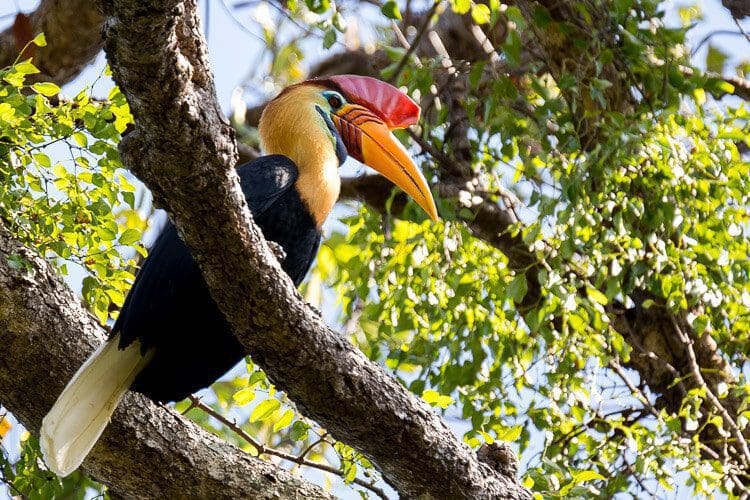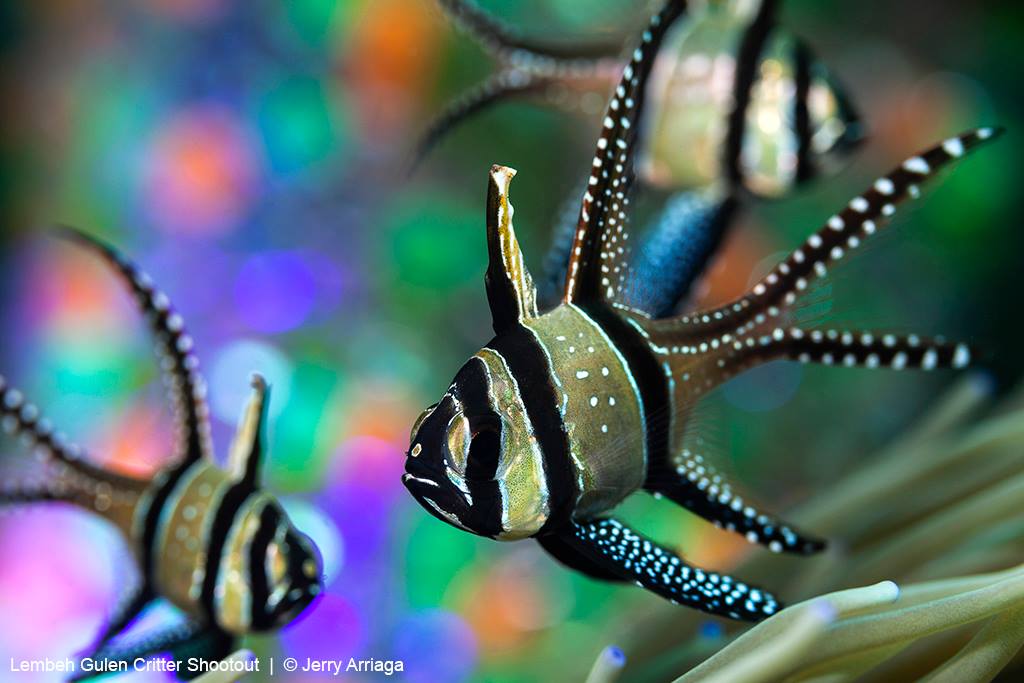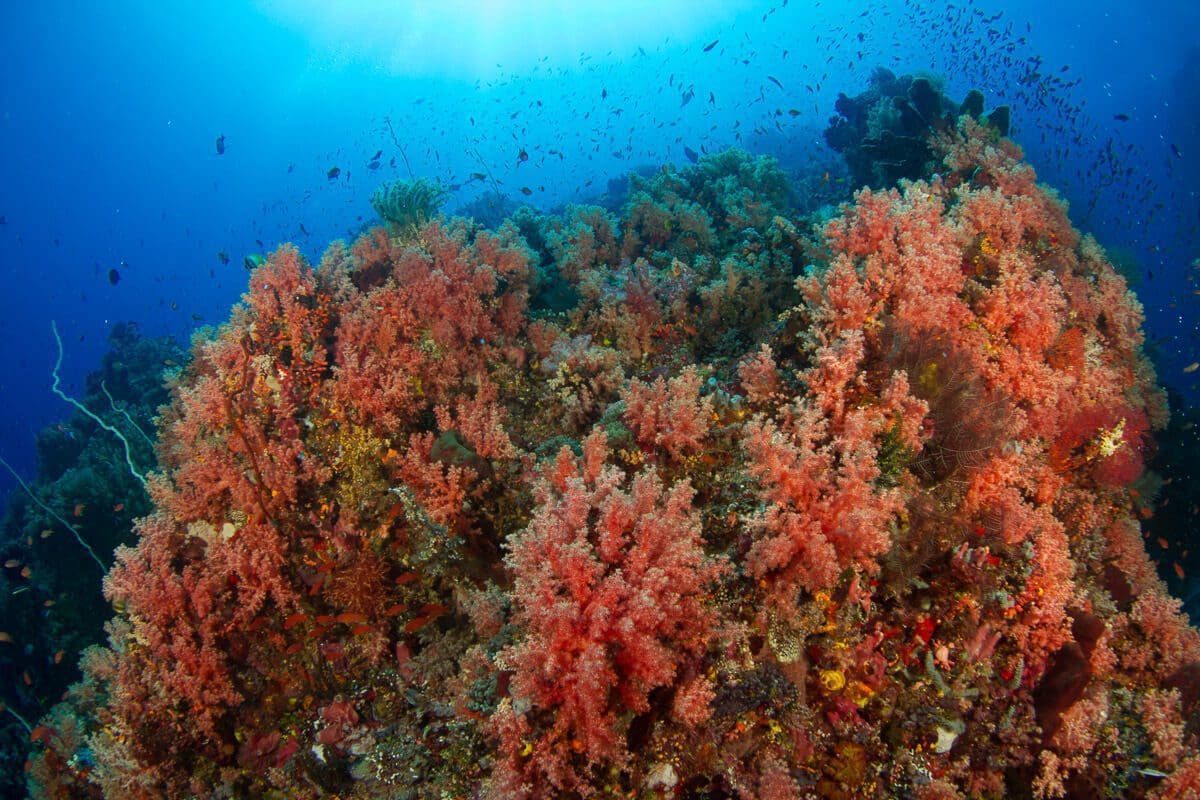What is the Wallace Line in Indonesia?
If you spend any time online finding out about the geography of Indonesia or researching its flora or fauna, it’s highly likely that you will read about the ‘Wallace Line’. What exactly is this hypothetical line though? When and how was it discovered? Where is it and what impact does it have on Indonesia today? In this article, we aim to answer these questions about the Wallace Line and a lot more!
Who was Alfred Russel Wallace?

The Wallace line takes its name from the late Alfred Russel Wallace (8 January 1823 – 7 November 1913). Wallace was a British naturalist, biologist and explorer most famous for conceiving the theory of evolution through natural selection. Wallace’s paper on evolution of species was jointly published with work from Charles Darwin but when Darwin published his book “On the Origin of Species’’ it was his name that became famously associated with theories of evolution.
Wallace was considered by many to be the 19th Century’s leading expert on the distribution of animal species and he has been referred to as the ‘father of biogeography’. As well as studying the geographical distribution of species, Wallace made numerous contributions to evolutionary theory including leading work on the concept of warning coloration in animals.
Unlike many other preeminent scientists and naturalists at the time Wallace did not come from wealthy roots and he struggled with financial hardship throughout his lifetime. Much of his funding came from collecting specimens during his travels which he sold to collectors back in Europe – with varying levels of success. Much of the fortunes that he raised through his work as a collector he lost later in a series of bad investments leaving him to finance himself through writing numerous publications. Wallace struggled to find a permanent, long term salaried position and it was thanks to the efforts of Charles Darwin, amongst others, that he was eventually awarded a small government pension to support himself later in life.
Wallace documented his adventures meticulously and his reports of his explorations in Singapore, Indonesia and Malaysia are regarded by many as the best journals of scientific exploration published in the 19th Century. During his travels in the Indonesian Archipelago Wallace collected over 126,000 specimens, several thousand of which were new discoveries to science. It was during his time in Indonesia that he pondered upon his theories of natural selection which were published in 1869 in ‘’The Malay Archipelago’’ – a work that was dedicated to Charles Darwin and has never since been out of print.
Wallace’s theories were not met with enthusiasm from the outset, his ideas challenged not only scientific values but also religious ones – at the time in which he was writing it was commonly believed that every species was created by God and Wallace’s ideas challenged this age old view point by suggesting that species actually evolved over time as opposed to becoming extinct and a new species being created by an almighty power.
Discovering the Wallace Line
It was during his field research in Indonesia that Wallace began to notice differences between the fauna in the east and the west of the archipelago; he discovered a faunal divide which split Indonesia into two separate parts – this divide became known as the Wallace Line. Wallace discovered that the animal species found to the west of the line were all similar to, or derived from, species found on the Asian mainland whilst the species found to the east of the line were largely of Australian descent. Along the line itself, there was a mix of species, including some hybrid species.
What Caused the Wallace Line?
Millions of years ago during the ice ages sea levels were considerably lower than they are today. Asia and Australia were joined together and formed one huge landmass on which numerous species lived, roamed and reproduced freely. This continued until the end of the ice ages when sea levels rose and plate tectonics started to take effect and pulled this land mass apart allowing water (oceans) to flood the space that opened up between the two new masses. As the two separate continents of Asia and Australia formed, the species that were locked into them began to evolve in different directions making them quite specific to either continent. As time passed and isolated reproduction continued the differences between the species, which had once been closely related prior to the continental division, became much more pronounced.
Where is the Wallace Line and What Species Observe it?

The Wallace line runs through Indonesia between Borneo and Sulawesi and down through the Lombok Strait which separates Bali and Lombok. Birds appear to mainly observe the line as many species do not fly over even narrow stretches of water and mammals are generally limited to either one side or the other. Other plant and animal groups show differing levels of observation of the line but in general, the division of species is strikingly consistent – one exception is the long-tail macaque (also known as the crab-eating macaque) which is one of only a few species of mammal found on either side of the Wallace line.
The invisible ‘Wallace Line’ is also noticeable from the geological landscape of the area particularly when looking at the continental shelf contours. The Wallace Line basically follows a deep-water channel that marks the south eastern edge of the Sunda Shelf which links Borneo, Bali, Java, and Sumatra underwater to the mainland of South East Asia. Australia is likewise connected via the shallow ocean over the Sahul Shelf to New Guinea – these geological features are indicators of the period when Asia and Australia were still one land mass.
What and Where is “Wallacea”
When the two continents of Asia and Australia were formed by the separation of the previously one land mass, a number of islands and island chains were created along the Wallace Line which were separated by deep water trenches from the Asian and Australian Continental Shelves. These islands are now collectively known as Wallacea and they are home to a number of very distinctive species.
The Wallacea Islands include Sulawesi, Lombok, Sumbawa, Flores, Sumba, Timor, Halmahera, Buru and Seram and the many smaller islands that lay between Sumatra, Borneo and Java to the west and Australia and New Guinea to the south and east. In total the Wallacea Islands encompass a total land area of approximately 347,000 square kilometres and are home to numerous endemic species of both plants and animals.
The Wallace Line, Wallacea, and Lembeh (North Sulawesi)
Lembeh Island in North Sulawesi is a Wallacea Island and, as such, is home to numerous endemic species of flora and fauna. Below is an overview of some of the unique lifeforms found in this region.
Fauna
There is still a lot to learn about the fauna of North Sulawesi, however, it is thought that there are around 10,000 species of vascular plants with approximately 1,500 of those species being endemic.
Birds

Wallacea is home to around 650 species of (regularly seen) birds, with around 40% of them being endemic to the region. Endemic species include Sulawesi owls, the knobbed hornbill, Maleo birds, and the green-backed kingfisher – all of which can be seen in the Tangkoko Nature Reserve.
Mammals

Young baby doing care of his mother endemic monkey Celebes crested macaque known as black monkey in rainforest Tangkoko Nature Reserve in North Sulawesi Indonesia wildlife
More than half of the mammal species found in Wallacea are found nowhere else on Earth. One of the strangest mammals that we have in North Sulawesi is the Babirusa, which is a pig-like animal in which the males have highly distinctive curved tusks.
In the Tangkoko Nature Reserve, you will also find troops of endemic Sulawesi black crested macaques and spectral tarsiers – both of which are also unique to our region.
Sadly, around one third of the endemic mammal species found in Wallacea are threatened with extinction, something that the team at Tasik Oki Rescue and Rehabilitation Center are fighting to overcome.
Reptiles
Wallacea is home to more than 220 reptile species and almost 100 of which are confined to the Wallacea Islands.
Although not resident in North Sulawesi, the best-known reptile species in Wallacea is the Komodo dragon (Varanus komodoensis), the largest lizard on the planet.
Amphibians
There are almost 50 species of frogs in Wallacea and more than 30 of these species are endemic, including the Sulawesi toad (Bufo celebensis) and the endangered Oreophryne monticola.
Marine Species

The Lembeh Strait is home to several marine species that are endemic to Wallacea and up to this day, new species are still being regularly discovered and described. Endemic marine life is an unusual phenomenon in itself. Generally speaking, marine species reproduce and larvae hatch which is then dispersed by ocean currents and can therefore spread far afield. When a species is present in only one area this usually indicates the presence of surrounding deep ocean trenches or unique underwater topographies or patterns of water movement. Two of the most iconic endemic marine species in Wallacea (and found in the Lembeh Strait) include the Banggai Cardinalfish (Pterapogon kauderni) and the more recently discovered Lembeh Sea Dragon (Kyonemichthys rumengani ).
Other Animal Genus
Many of the insects found in Wallacea are also highly endemic, as well as invertebrates – of which many species are still to be studied and officially recognized by science.
Introducing the Coral Triangle

As well as straddling the Wallace Line Indonesia also sits in the heart of what is termed ‘The Coral Triangle’ – an area recognised as being the global epicentre of marine biodiversity. The Coral Triangle is a roughly triangular shaped area covering the tropical marine waters of Indonesia, Malaysia, Papua New Guinea, the Solomon Islands, and East Timor.
Despite spanning only 1.6% of the world’s oceans the Coral Triangle:
- Is home to approximately 600 different species of reef-building corals (76% of the world’s known coral species)
- Provides habitat for 2,500 species of fish (37% of the world’s fish species)
- Supports and provides habitat for 6 species of threatened marine turtles, numerous endangered fish and cetaceans, including tuna and blue whales.
The Coral Triangle has been widely recognised as a global priority for conservation and there are numerous NGO’s working on a range of conservation projects within the area focusing on the protection of vulnerable species, finding sustainable livelihoods for coastal communities, and aiming to reduce destructive fishing practices.
Find out more about how the Lembeh Foundation works with communities on Lembeh Island here.
Book Your Stay at Lembeh Resort

If you are ready to book your stay with us – or would like more information about our rates and availability contact us at reservations@LembehResort.com.
Our reservations team looks forward to assisting you!
Further Reading
If you enjoyed reading this article, you may also enjoy some of our other recent posts about marine conservation and marine species found in the Lembeh Strait:


